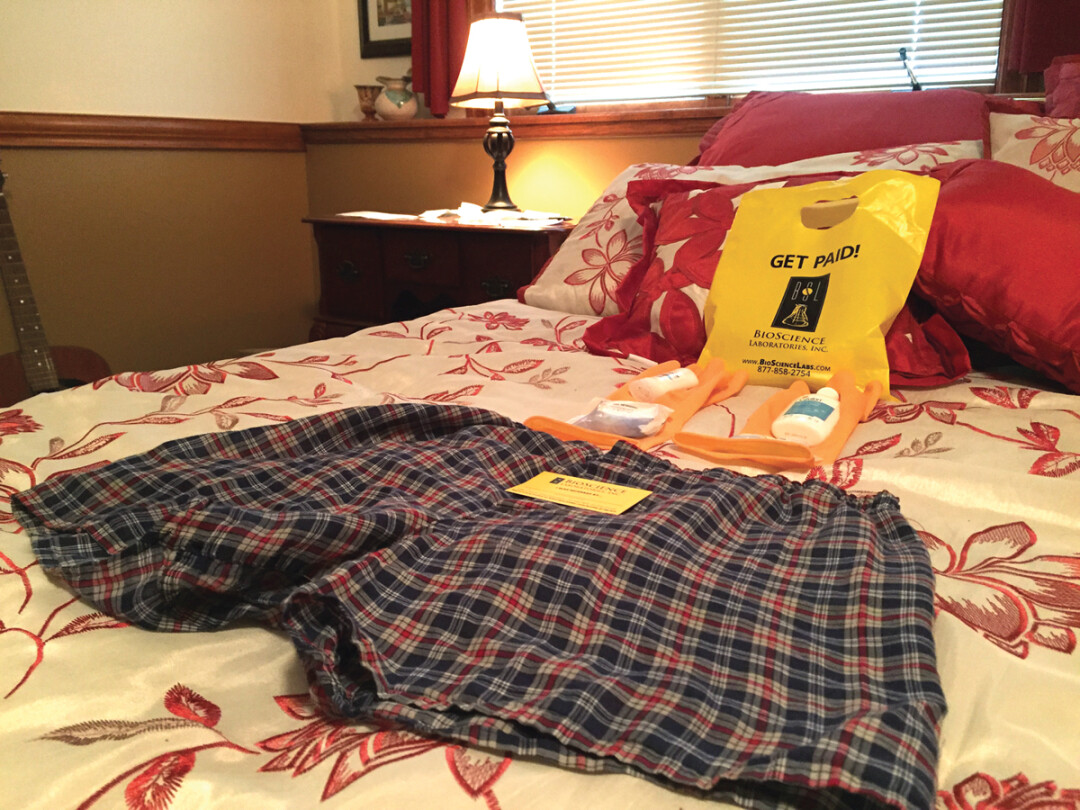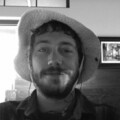Bioscience: An Experiential User’s Guide
Kris Drummond | Friday Sep. 1st, 2017
It’s all a joke now, a strange dream of filth and heartbreak.
It’s over. I’m clean. And while the smell is gone, the memory remains.
I’m talking about the month I spent as a participant in a study at Bozeman’s own Bioscience Laboratories. For all of July, I submitted to a regimen of sponge baths and mini deodorant sticks and tactfully-denied invitations to go swimming. I wore the same pair of boxer-briefs for a week straight, made small talk with a scientist swabbing my inner thigh (multiple times) and learned more about infectious diseases than I ever wanted to know. In 21 days of not showering, I contemplated the intersection of dignity and financial necessity and how to best encourage bacteria to grow on my body. Conversation after conversation turned to anecdotes, stories like “the friend who didn’t pass by rubbing themselves down with raw chicken on test day” or “my buddy let his dog lick him, but turns out that dogs’ mouths are cleaner than human mouths.” In hearing those stories from multiple sources, I realized that this study, the Bioscience “Pre-Op,” has grown it’s own mythology after more than a decade of offering Bozemanites an easy, albeit odd, way of boosting their income. It was on one of the testing days, as I was laying on the examination table in massage underwear, staring into fluorescent ceiling lights, holding the classic “frog-leg” position, that I realized the tale had to be told.
I’m a Bioscience success story. I can reliably grow enough bacteria on the lower half of my body to pay a month’s rent. It’s time to put the myths to rest and let the people know how it’s done. If I bring nothing else to humanity in my time on Earth, I will at least sleep easier knowing that I tried.
From what I gathered, the study is part of a push to bring a new pre-surgery antibacterial to market, because as it stands, only one exists. There’s a whole bunch of money invested in financing the requisite FDA trials that if successful, will allow a competitive market to emerge into the monopolized field of pre-surgery topical disinfectants.
So the real question is, what does this mean for participants?
Mostly, it means not showering.
But beyond that, it means that by not showering for three weeks and by employing the little tricks I’m about to reveal, Bioscience participants are eligible to earn between $400 and $600, depending on the particular study. It’s an amazing and hilarious opportunity that costs about 3 hours of your life and only a few self-respect percentage points. And really, anything done in the name of science carries the implication of a heroism rarely seen in today’s cauterized society. So if you want to get paid to be a hero, please read on.
I’ve participated in this study three times now and each time, after signing the dotted line, I experience the classic calm before the storm. The study calendar goes up on the fridge with the important dates circled, the red letters reading “consider not showering by this day” penetrating into my consciousness. I reflexively lift my arm and sniff. It’s okay for now. Like all trials, this adventure begins slowly.
However, a few days into my life of science, a particularly stifling July afternoon, I find myself walking in circles outside the bathroom. I want a cold shower. I want to clean the grime from my legs. I want to be presentable for a job interview. But then I stop. It hits me. For the next three weeks, not showering IS my job. I’m not unemployed at all. I am, as the kids say, funemployed. With this in mind, I submit to the filthy inner-child who shrugs off the compromise of a sponge bath. I don’t want to risk dropping my bacteria count. Not yet.
The general rule of thumb when incubating bodily microbes is that the less one changes clothes, the better. I took this to heart. For three weeks, as I looked at myself in the mirror, while brushing my teeth, washing my hands (water only), whispering bacteria into existence, I stared back at the same three shirts, changed only when I knew that I’d be seeing someone two days in a row. I had my primary, a black t-shirt with a comedian’s name on the front, and then two other options that I could revert to, if absolutely necessary. I usually stretch a week or two out of my shorts between washes, so nothing much had to change there.
Along with the limited outerwear options, Bioscience style also necessitates a limitation of the undergarments. In my totally unscientific mind, I decided that boxer-briefs would probably lead to the most conducive conditions for bacteria growth, and so I bought a pack of grey Hanes and submitted myself to the snug. Without going into precise details of coloration, texture, or the other interesting discoveries I made, I can say that boxer-briefs are one of the most important factors in attaining a successful outcome.
With the clothing stuff figured out in the first week, I turned my attention to other aspects of bacteria growth. When you sign up for the study, you’re given a yellow bag filled with small sticks of Degree deodorant, latex gloves, soap bars, and unscented lotion. It was the last item on that list, the lotion, that I began to explore. While the inguinal (inner thigh) testing sites were taken care of via boxer brief thigh-climate technology, the lower abdomen sites were less contained, more arid, exposed to the unforgiving conditions of mid-summer Montana.
The solution was clearly lotion.
So each morning, as I was getting ready for another day on the job of not-showering, I would rub my belly with the scentless cream and hope that I wasn’t drowning any of my sweet microbes.
I wasn’t. The lotion turned out to be just the thing, and it was absolutely a necessary factor in passing the dreaded lower-abdomen sites.
The last element of my job description was figuring out the right amount of physical activity required to keep my bodily biome growing without sweating too much and washing away all that hard work. I settled on a bi-weekly bike ride and a brisk walking rate at all other times. These, along with a few other intermittent moments of physical exertion, seemed to allow for perpetual tropics in all the right places.
With a can-do attitude and these pieces in place, the last challenge of the Bioscience Pre-Op study becomes showing up for the actual testing days at the Bioscience campus.
I’m not going to sugarcoat it. It’s a strange time.
The protocol is basically as follows: Show up fifteen minutes early, sign in, and wait until your name is called. When the fated hour arrives, you’re escorted back into a lab divided into multiple testing areas with fabric partitions. The lab tech awkwardly points to a package labeled “spa intimates” and says “go ahead and change into those and let us know when you’re ready.” Every time, that’s what they say.
So I do. I put on the underwear and lay down on the table. The two techs come back and try to avoid talking about the strange circumstance that we have all found ourselves in as they prepare a stopwatch, a syringe filled with testing fluid, and a metal tube that will soon be pressed to my inner thigh. Weather talk quickly evolves to bacteria talk, and if it’s a Monday, Game of Thrones talk. We chuckle as cold, sterile fluid hits my lower belly and the man whisking it tells me how boring of a virus E-Coli is in comparison to Gonorrhea. I change the subject to Khaleesi and Jon Snow.
If everything goes well, a Bioscience participant will have this experience three times, and a week later, will have a check with their name on it waiting in the office. Money is undoubtedly the reason to participate in this study, but beyond the paycheck, there is a strange sense of accomplishment walking out that door. It’s surprisingly difficult to grow however-many billion organisms on an external region of the body. It really does require dedication, passion, and perseverance to stick to the stinky and uncomfortable regimen. And perhaps most importantly, it requires a sense of humor. Somehow you have to explain to everyone in your life why you can’t go floating and why you’re wearing a shirt that resembles a soiled napkin everyday.
But seriously, it’s worth it.
For more information, go to biosciencelabs.com
| Tweet |
